Infection
- Page Path
-
- HOME
- TOPICS
- Infection
- Topics
-
- Adolescence Medicine (3)
- Allergy (52)
- Cardiology (76)
- Critical Care Medicine (8)
- Developmental and Behavioral Medicine (17)
- Emergency Medicine (5)
- Endocrinology (51)
- Gastroenterology (57)
- General Pediatrics (37)
- Genetics and Metabolism (20)
- Hematology (11)
- Immunology (12)
- Infection (66)
- Neonatology (Perinatology) (103)
- Nephrology (Genitourinary) (49)
- Neurology (88)
- Nutrition (25)
- Oncology (15)
- Neurobehavior (11)
- Pulmonology (25)
- Rheumatology (2)
- Other (28)
- Review Article
- Infection
- Community-acquired pneumonia in children: updated perspectives on its etiology, diagnosis, and treatment
- Ki Wook Yun
- Clin Exp Pediatr. 2024;67(2):80-89. Published online June 14, 2023
-
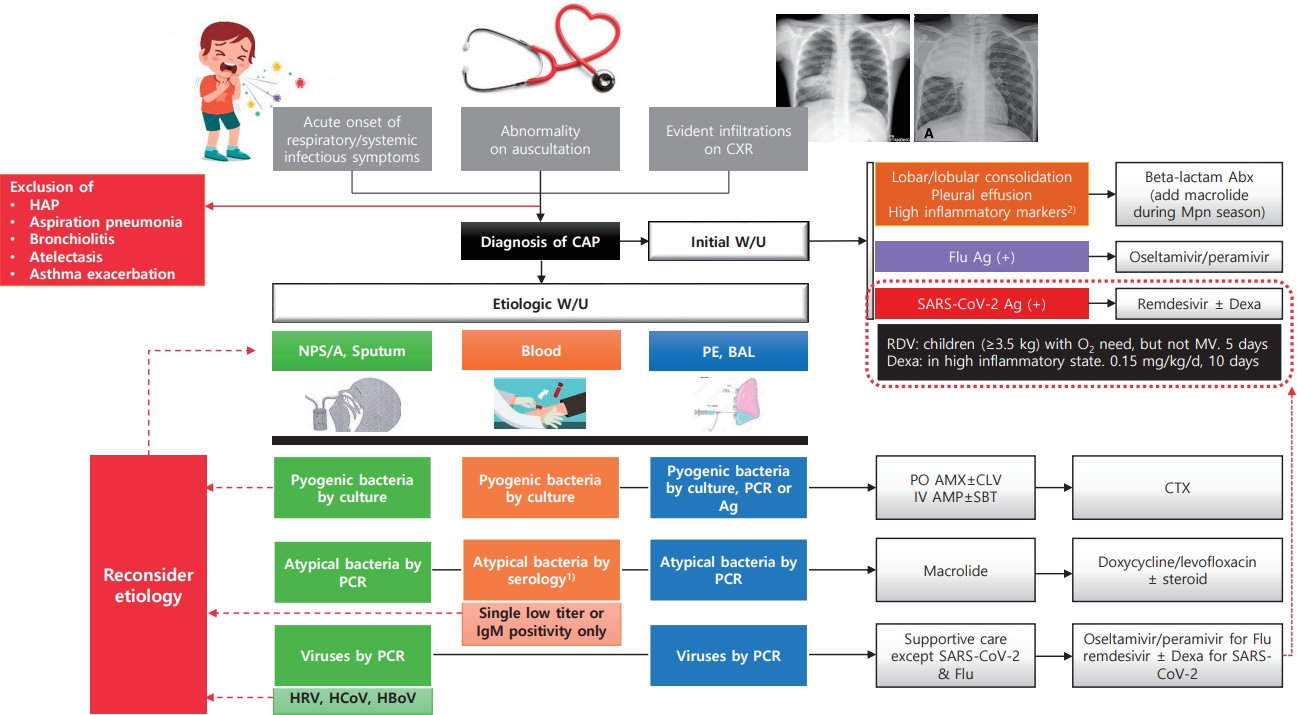
· Most commonly confirmed causes of community-acquired pneumonia (CAP) in children are Mycoplasma pneumoniae (8%–40%) and respiratory syncytial virus (15%–20%).
· Pyogenic bacteria, most commonly Streptococcus pneumoniae (40%–50%) and Streptococcus pyogenes (10%–25%), are detected in 2%–5% of children hospitalized with CAP.
· CAP should be diagnosed conservatively according to clinical and radiological criteria.
· The etiology should be identified via appropriate test result interpretation.
- COVID-19 among infants: key clinical features and remaining controversies
- Nevio Cimolai
- Clin Exp Pediatr. 2024;67(1):1-16. Published online November 27, 2023
-
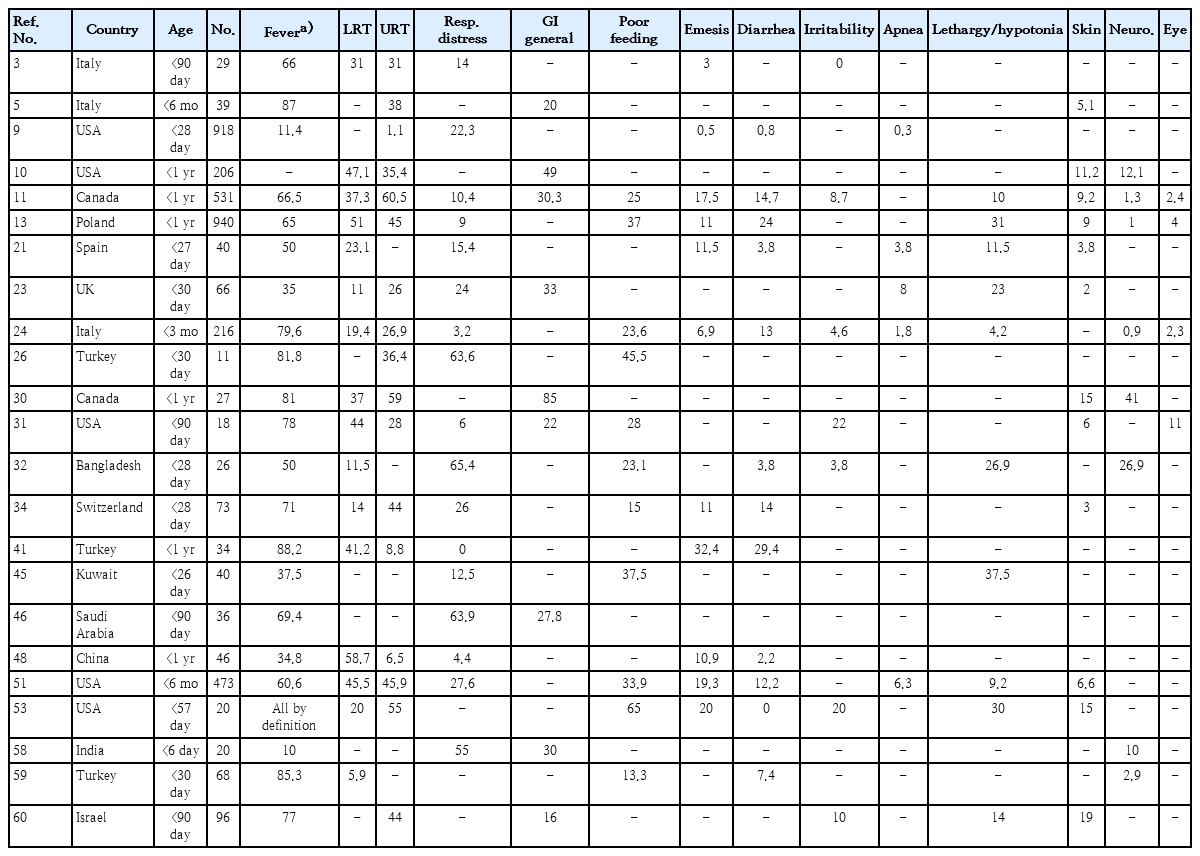
· Clinical studies of coronavirus disease 2019 (COVID-19) in infants should be supported by rigorous laboratory diagnostic criteria.
· Severe acute respiratory syndrome coronavirus 2 (SARS-CoV-2) spreads to infants similarly to other viral respiratory infections.
· Among infants ≤1 year of age beyond the immediate postpartum period, COVID-19 is relatively mild, but even the low risk of severe disease requires prevention.
· Comorbidities increase infection vulnerability and complications in infants.
· Clinical and laboratory data do not sufficiently distinguish COVID-19 from other respiratory viral infections.
· Coinfection with SARS-CoV-2 is uncommon among infants.
· Unique infection sequelae, including multi-inflammatory syndrome in children and neonates and long COVID require further study and refinement of diagnostic criteria.
· Infection control standards applied to mother-infant dyads should be tempered by standard preventive strategies, maternal input, accommodation potential, and overall safety.
· Maternal vaccination prevents disease in early infancy.
- Editorial
- Infection
- COVID-19 infection and vaccination among children
- Amnuay Kleebayoon, Viroj Wiwanitkit
- Clin Exp Pediatr. 2023;66(12):531-532. Published online August 30, 2023
-
· Coronavirus disease 2019 (OVID-19) infection and immunization have been linked with kidney problems; however, causality has not been proven.
· Concern about confounders is usually needed.
· Correspondence about a published article on the COVID-19 vaccine
- Review Article
- Infection
- Safety monitoring of COVID-19 vaccines: February 26, 2021, To June 4, 2022, Republic of Korea
- Yeon-Kyeng Lee, Yunhyung Kwon, Yesul Heo, Eun Kyoung Kim, Seung Yun Kim, Hoon Cho, Seontae Kim, Mijeong Ko, Dosang Lim, Soon-Young Seo, Enhi Cho
- Clin Exp Pediatr. 2023;66(10):415-423. Published online June 13, 2023
-
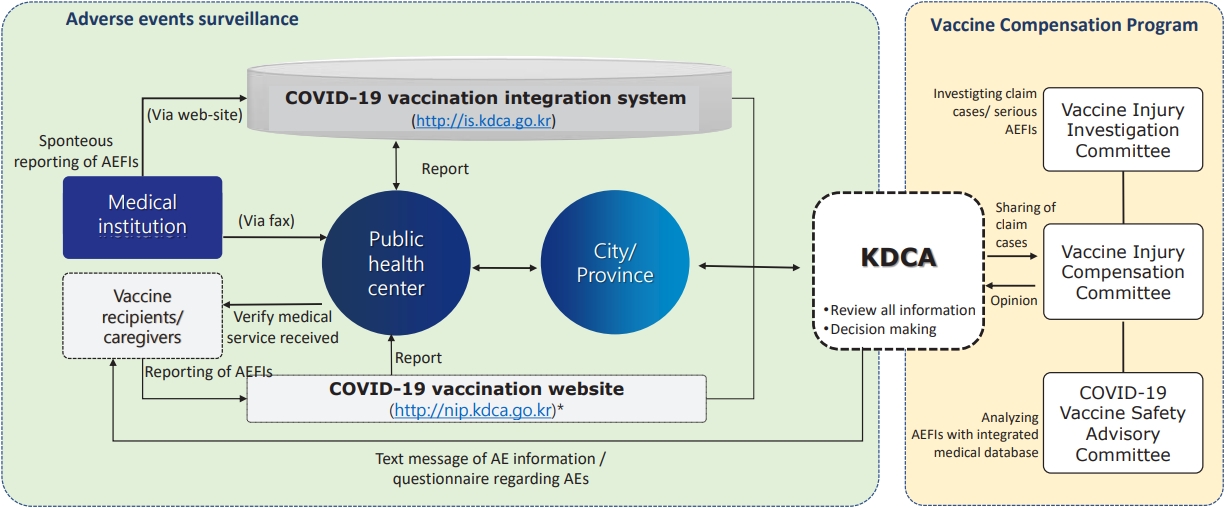
· Enhanced safety monitoring system of coronavirus disease 2019 (COVID-19) vaccines were implemented to detect signals rapidly as part of the national COVID-19 vaccination program.
· As of June 4, 2023, reported adverse events after COVID-19 vaccination was 0.38% among 125,107,883 doses of COVID- 19 vaccines administered.
· Most reported adverse reactions after COVID-19 vaccinations have shown nonserious and mild intensity.
- Letter to the Editor
- Infection
- SARS-CoV-2 fecal shedding pattern in pediatric patients with acute COVID-19 or COVID-19-associated multisystem inflammatory syndrome
- Setareh Mamishi, Fatemeh Jalali, Sepideh Benvari, Babak Pourakbari, Mohammad Reza Abdolsalehi, Reihaneh Hosseinpour Sadeghi, Mohammad Shahbabaie, Amene Navaeian, Shima Mahmoudi
- Clin Exp Pediatr. 2023;66(8):366-368. Published online June 14, 2023
-
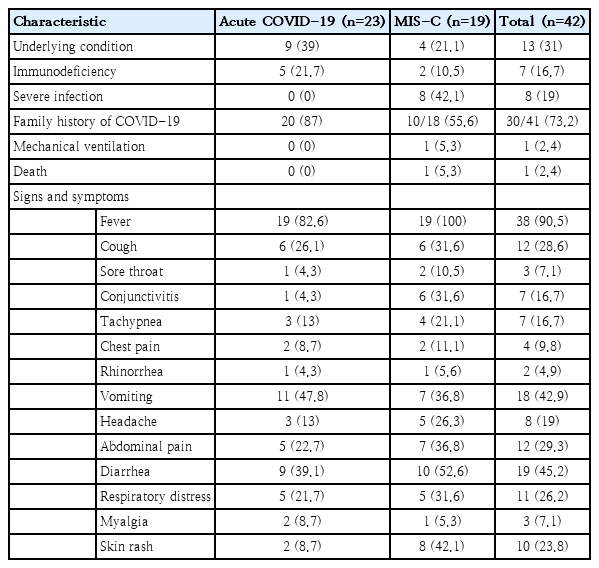
- Chest x-ray findings in children with COVID-19: lesson learned from referral hospitals in Medan, North Sumatera, Indonesia
- Andrew Limavady, Eka Airlangga, Ririe Fachrina Malisie, Ayodhia Pitaloka Pasaribu
- Clin Exp Pediatr. 2023;66(7):317-319. Published online May 16, 2023
-
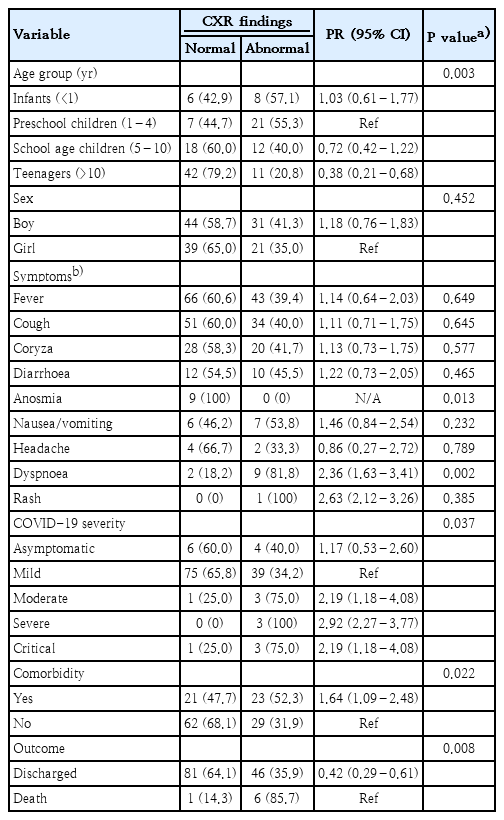
- Original Article
- Infection
- Seroprevalence of maternal peripartum human T-cell lymphotropic virus type-1 infection: a systematic review and meta-analysis of the Nigerian literature
- Abdulrasheed Usman, Muhammad Hamis Musa, Bukhari Isah Shuaib, Olayemi Balogun, Mukhtar Adeiza
- Clin Exp Pediatr. 2023;66(7):307-316. Published online December 22, 2022
-
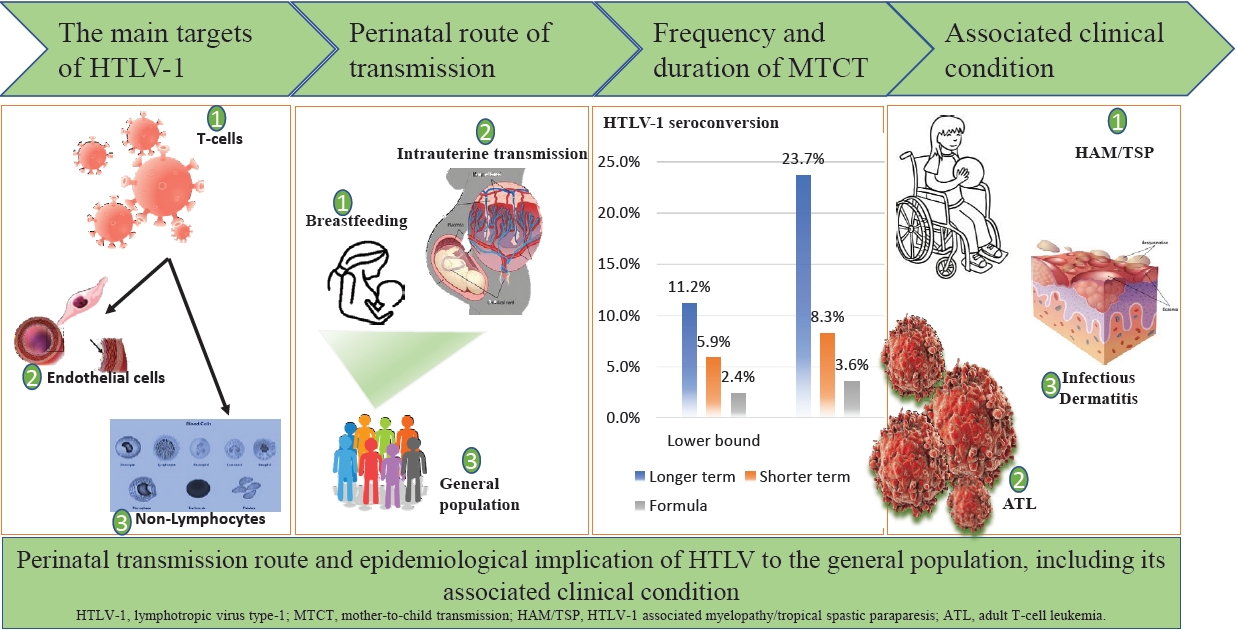
The peripartum period is an important transmission time for human T-cell lymphotropic virus-1 (HTLV-1) infection, mainly via breastfeeding and partly through the placental tissues of carrier mothers. Although most HTLV-1–infected individuals are asymptomatic, fetal and childhood infections often result in several diseases with disappointing treatment outcomes. An estimated HTLV-1 burden in Nigeria among perinatal women must be determined to enable rational planning of a comprehensive health care intervention.
- Editorial
- Infection
- Impact and role of vitamins as immunonutrition in children during COVID-19 pandemic
- Yoo Min Lee
- Clin Exp Pediatr. 2023;66(5):212-214. Published online April 18, 2023
-
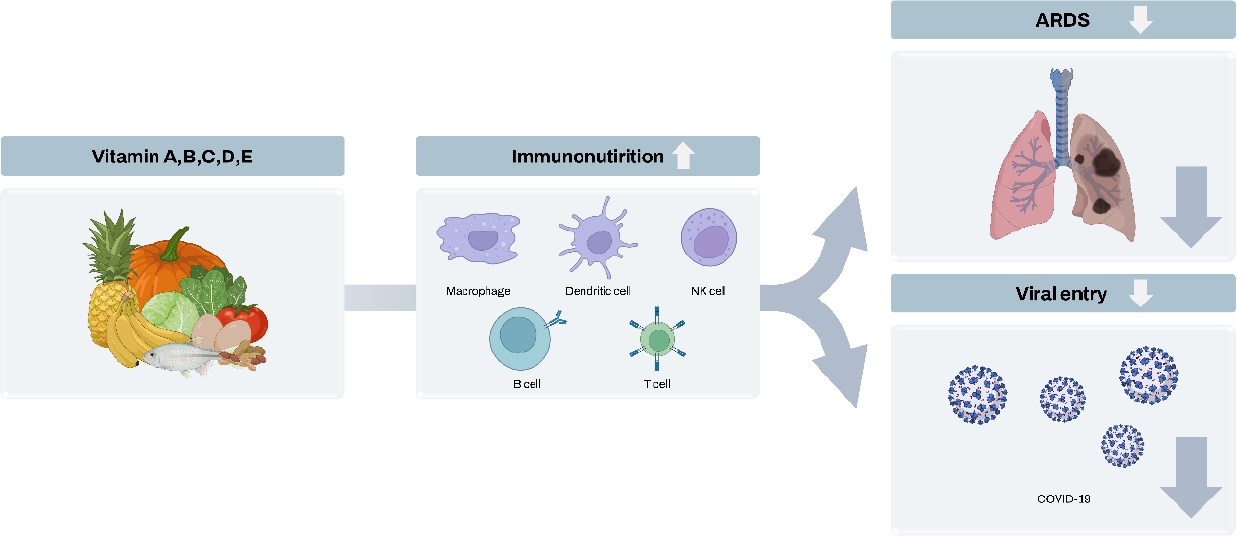
· Vitamins have effector mechanisms in the innate and adaptive immune systems and potential roles in preventing and reducing the severity of coronavirus disease 2019 (COVID-19).
· Vitamins may be immunonutrients in the treatment of COVID-19 infections and prevention of patient deterioration due to critical illness, thus demonstrating the significance of a nutritious, well-balanced diet.
- Review Article
- Infection
- COVID-19 in immunocompromised children and adolescents
- Byung Ok Kwak, Byung Wook Eun
- Clin Exp Pediatr. 2023;66(5):182-189. Published online April 18, 2023
-

Most immunocompromised children and adolescents are not at increased risk of developing severe coronavirus disease 2019 (COVID-19). COVID-19 outcomes for low- or medium-risk immunocompromised children are favorable, while more serious illness reportedly occurs in high-risk immunocompromised children by underlying disease, its treatments, and other factors. Therefore, the early detection and timely management of severe COVID-19 and treatment of underlying disease are important. Hospitalization and COVID-19 vaccination should be carefully considered.
- Original Article
- Infection
- Predicting COVID-19 transmission in a student population in Seoul, South Korea, 2020–2021
- Young Hwa Lee, Han Ho Kim, Young June Choe
- Clin Exp Pediatr. 2023;66(4):173-178. Published online December 22, 2022
-
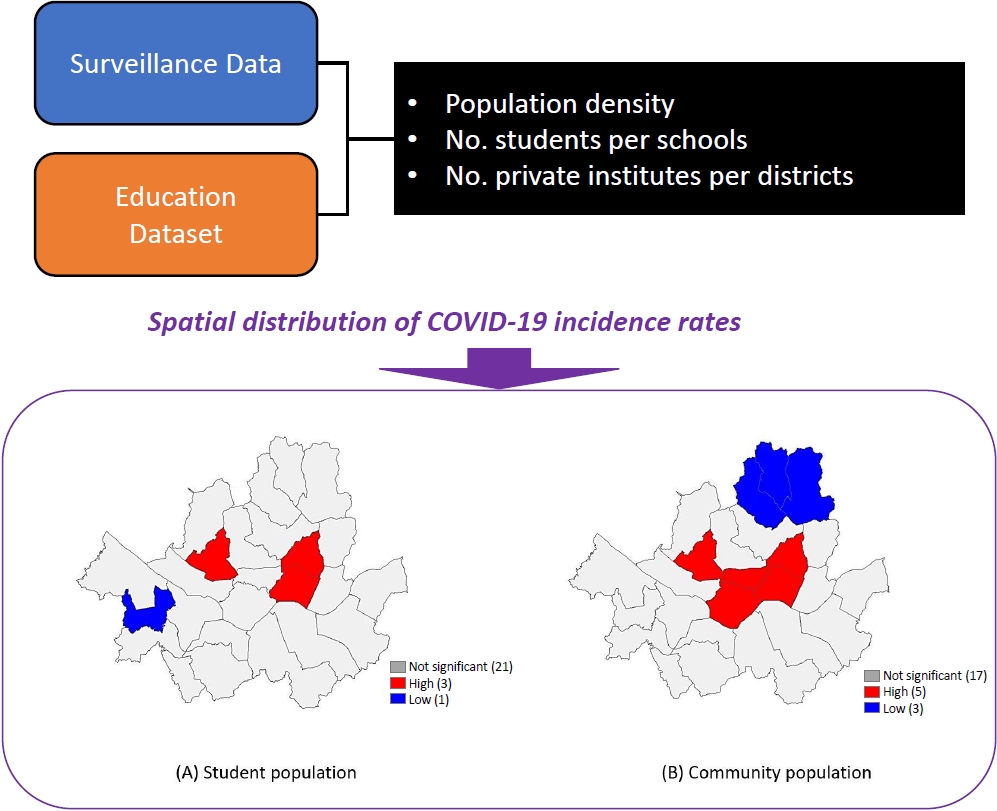
Question: What is the spatial distribution and determinants of coronavirus disease 2019 (COVID-19) infection among students in Korea?
Finding: The community population was closely associated with the risk of COVID-19, and the number of students per school class were inversely associated with COVID-19 rates in students.
Meaning: Our finding suggests that controlling the community-level burden of COVID-19 can help prevent sudden acute respiratory syndrome coronavirus 2 infection in school-aged children.
- Clinical characteristics of pediatric patients infected with SARS-CoV-2 versus common human coronaviruses: a national multicenter study
- In Suk Sol, Eun Lee, Hyeon-Jong Yang, Yong Ju Lee, Hye Yung Yum, Mi-Hee Lee, Mi Ae Chu, Hui Jeong Moon, Hyo-Bin Kim, Ju Hee Seo, Jung Yeon Shim, Ji Young Ahn, Yoon Young Jang, Hai Lee Chung, Eun Hee Chung, Kyunghoon Kim, Bong-Seong Kim, Cheol Hong Kim, Yang Park, Meeyong Shin, Kyung Suk Lee, Man Yong Han, Soo-Jong Hong, Eun Kyeong Kang, Chang Keun Kim; on behalf of The Pneumonia & Respiratory Disease Study Group of Korean Academy of Pediatric Allergy and Respiratory Disease
- Clin Exp Pediatr. 2023;66(3):134-141. Published online December 22, 2022
-
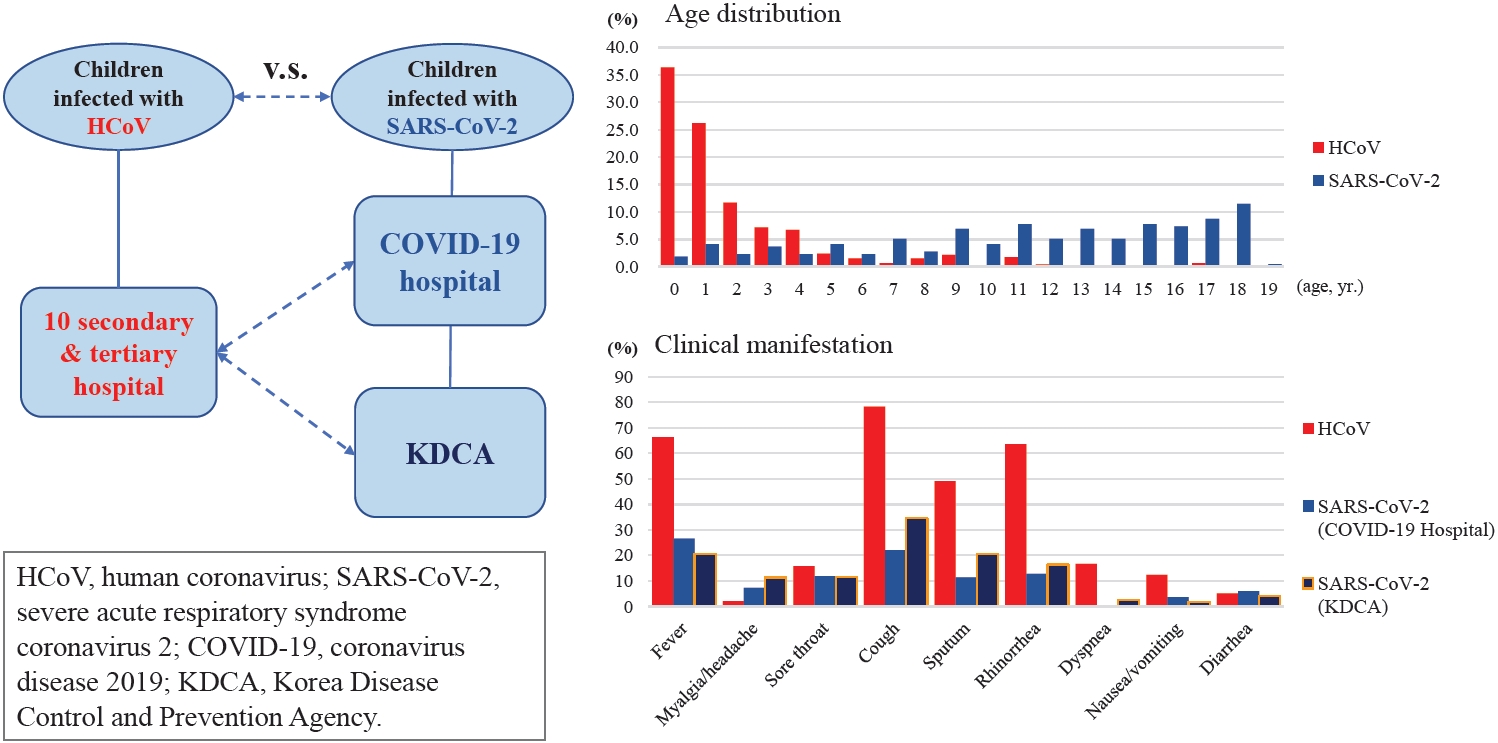
Question: The clinical differences between severe acute respiratory syndrome coronavirus-2 (SARS-CoV-2) and human coronaviruses (HCoV) in children remain unknown.
Finding: This study compared the clinical findings of children infected with SARS-CoV-2 versus HCoV. Its findings suggest that children and adolescents with SARS-CoV-2 have a milder clinical course than those with HCoV.
Meaning: The clinical course of children and adolescents with SARS-CoV-2 should be closely monitored during the coronavirus disease 2019 pandemic.
- Review Article
- Infection
- Pathogenetic and etiologic considerations of febrile seizures
- Ji Yoon Han, Seung Beom Han
- Clin Exp Pediatr. 2023;66(2):46-53. Published online January 13, 2023
-
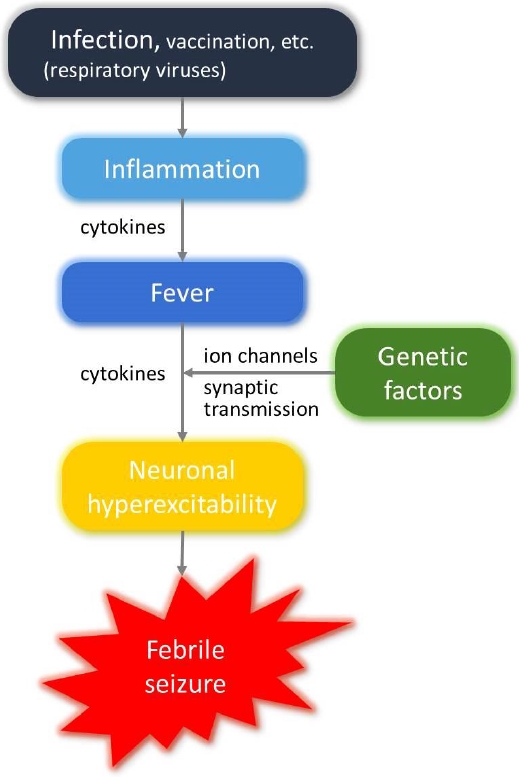
· Inflammatory responses accompanying fever increase neuronal excitability in the central nervous system, which in turn provokes seizures.
· Fever in children with febrile seizures is usually caused by common respiratory viruses, the distributions of which match those of seasonal community-acquired respiratory tract infections.
· Several genetic variations in ion channels seem associated with neuronal hyperexcitability in children with febrile seizures.
- Global varicella vaccination programs
- Young Hwa Lee, Young June Choe, Jia Lee, Eunseong Kim, Jae Young Lee, Kwan Hong, Yoonsun Yoon, Yun-Kyung Kim
- Clin Exp Pediatr. 2022;65(12):555-562. Published online November 2, 2022
-
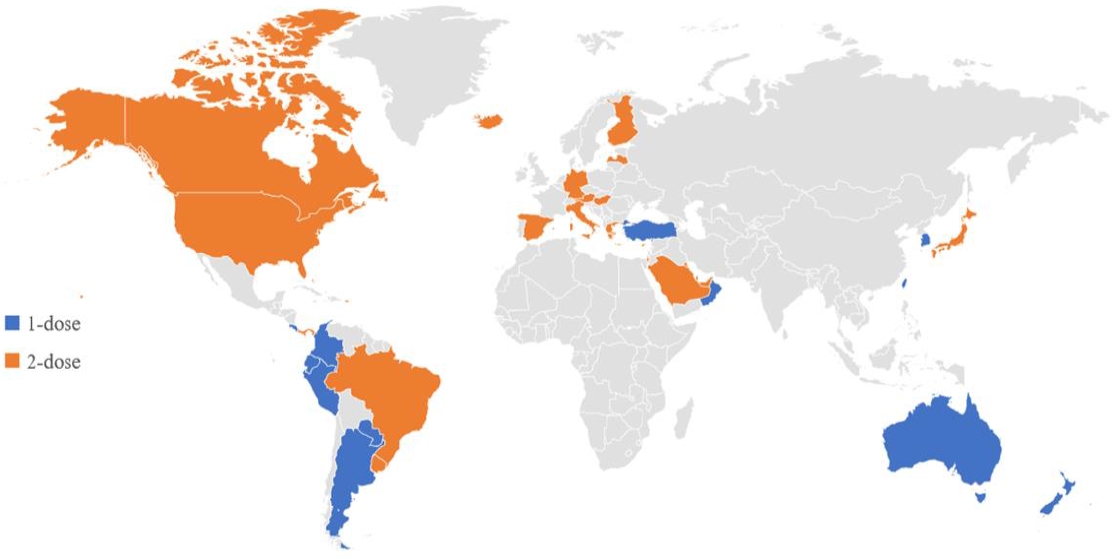
It is important to evaluate its effectiveness at the national level and to determine the varicella vaccine schedule based on the evidence generated through the studies.
- Perspective
- Infection
- Statement on healthcare system preparedness in response to COVID-19 Omicron subvariants BA.4 and BA.5 surge in Korea from the Korean Pediatric Society and Korean Society of Pediatric Infectious Diseases
- Eun Young Cho, Dong Hyun Kim, Soo-Han Choi, Ki Wook Yun, Jong Gyun Ahn, Hye-Kyung Cho, Hyunju Lee, Jina Lee, Taek-Jin Lee, Byung-Wook Eun, Jin Lee, Dae Sun Jo, Yun-Kyung Kim, Yae-Jean Kim; Committee on Infectious Diseases of the Korean Pediatric Society
- Clin Exp Pediatr. 2022;65(11):510-511. Published online September 23, 2022
-
In order to respond to the recent surge in coronavirus disease 2019 (COVID-19) cases and the continuously changing epidemiology of COVID-19, a sustainable and flexible pediatric healthcare system must be prepared considering the specificity of pediatric care. We demand a more proactive response from the health authorities to check the current state of pediatric COVID-19 patient care and to ensure that pediatric patients receive appropriate and timely management.
- Review Article
- Infection
- Therapeutics for the treatment of coronavirus disease 2019 in children and adolescents
- Soo-Han Choi, Jae Hong Choi, Ki Wook Yun
- Clin Exp Pediatr. 2022;65(8):377-386. Published online June 27, 2022
-
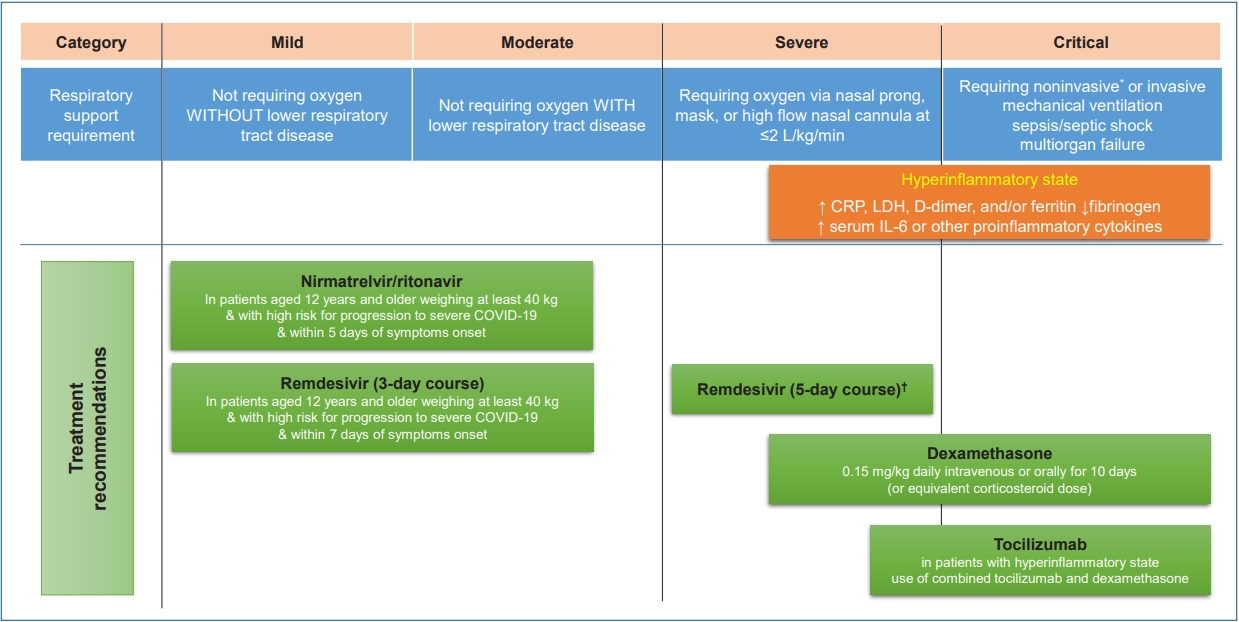
· Children and adolescents with high risks for severe coronavirus disease 2019 (COVID-19) should be identified and proper treatment should be provided promptly according to the patient’s condition.
· Remdesivir can be considered for pediatric patients of all ages with COVID-19 who have an emergent or increase in supplemental oxygen.
· The use of corticosteroids is not recommended for patients with nonsevere COVID-19. Corticosteroids are recommended in children and adolescents with severe and critical COVID-19.
- Original Article
- Infection
- Role of lung ultrasound patterns in monitoring coronavirus disease 2019 pneumonia and acute respiratory distress syndrome in children
- Satyabrata Roychowdhoury, Subhajit Bhakta, Manas Kumar Mahapatra, Saptarshi Ghosh, Sayantika Saha, Mithun Chandra Konar, Mihir Sarkar, Mousumi Nandi
- Clin Exp Pediatr. 2022;65(7):358-366. Published online May 13, 2022
-
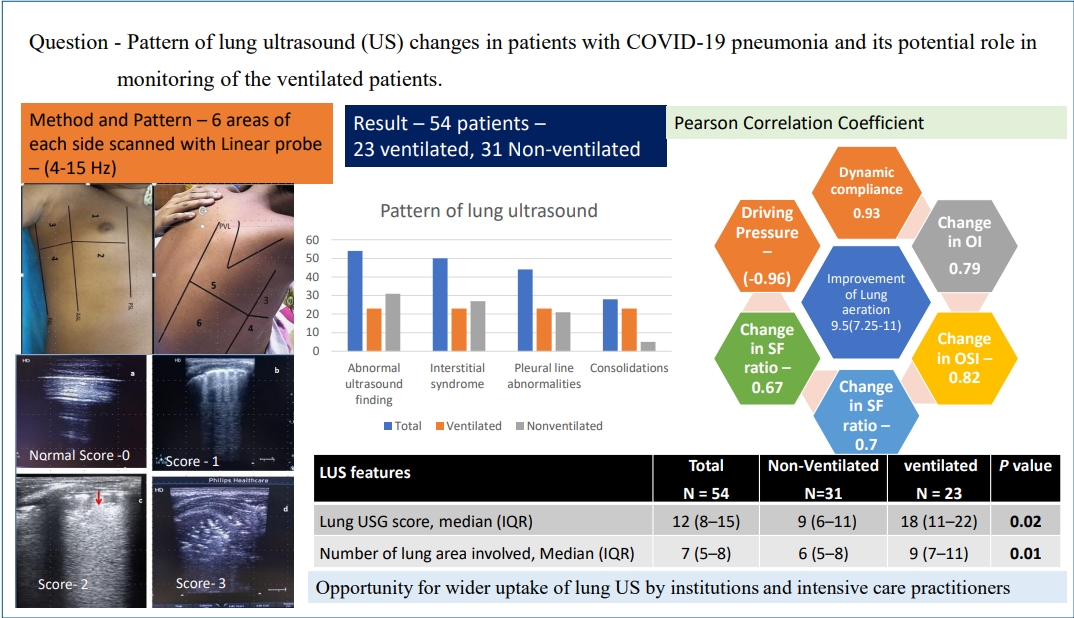
Question: Potential role of patterns of lung ultrasonography (US) in monitoring changes in mechanically ventilated patients with coronavirus disease 2019 (COVID-19) pneumonia.
Finding: Interstitial syndrome, an irregular pleural line, and peripheral microconsolidation were the most prevalent findings. Changes in lung aeration after mechanical ventilation corelated with improved oxygenation. A fall in lung ultrasound reaeration score ≤ 5 may predict successful weaning.
Meaning: Lung US is gaining wider utility for monitoring COVID-19 pneumonia.
- Letter to the Editor
- Infection
- Changes in epidemiology of parainfluenza virus and respiratory syncytial virus infection during coronavirus disease 2019 pandemic in Korea
- Kyung-Ran Kim, Hwanhee Park, Doo Ri Kim, Yae-Jean Kim
- Clin Exp Pediatr. 2022;65(6):320-321. Published online March 10, 2022
-

Question: How the epidemiology of other childhood respiratory viruses has changed during coronavirus disease 2019 (COVID-19) in Korea?
Finding: Parainfluenza virus (PIV) typically circulated in the spring, and respiratory syncytial virus (RSV) epidemic started in autumn in Korea before COVID-19 pandemic. PIV and RSV seasons disappeared in 2020 and came back in 2021 with atypical seasonality. PIV season was changed from spring to autumn, and the beginning of RSV season was slightly delayed from autumn to early winter in 2021.
Meaning: Circulation of PIV and RSV was changed to unusual seasons and patterns during COVID-19 pandemic period.
- Editorial
- Infection
- Effects of nonpharmaceutical interventions for coronavirus disease 2019
- Jae Hong Choi
- Clin Exp Pediatr. 2022;65(5):250-251. Published online March 22, 2022
-
∙ Nonpharmaceutical interventions (NPIs) have decreased the incidence of various infectious diseases, including coronavirus disease 2019 (COVID-19).
∙ During the 2-year COVID-19 pandemic, NPIs changed patients’ daily lives, and the impact on mental health was notable.
∙ The effects of NPIs were evaluated in detail, considering both infections and mental health.
- Review Article
- Infection
- Four months of rifampicin monotherapy for latent tuberculosis infection in children
- Chi Eun Oh, Dick Menzies
- Clin Exp Pediatr. 2022;65(5):214-221. Published online October 29, 2021
-
· Recently, the importance of a short-term treatment regimen including rifamycin has been highlighted in the treatment of latent tuberculosis infection (LTBI).
· Four prospective or retrospective studies in children consistently reported that a 4-month daily rifampicin regimen (4R) had a higher completion rate than and comparable safety to a nine-month daily isoniazid regimen.
· We suggest rifampicin 20–30 mg/kg/day for children aged 0–2 years and 15–20 mg/kg/day for children aged 2–10 years in 4R to treat LTBI.
- Epidemiological changes in infectious diseases during the coronavirus disease 2019 pandemic in Korea: a systematic review
- Jong Gyun Ahn
- Clin Exp Pediatr. 2022;65(4):167-171. Published online November 30, 2021
-
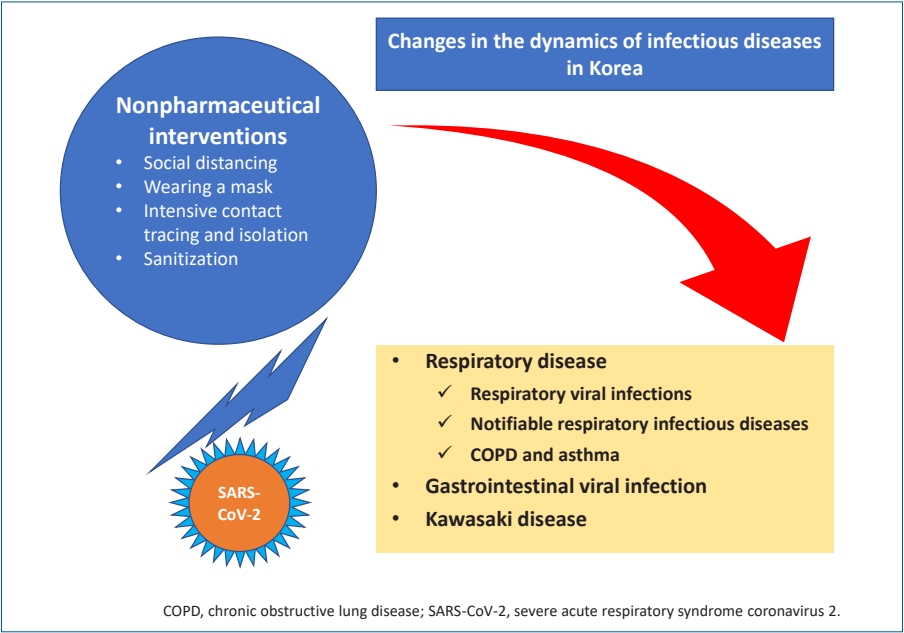
· Nonpharmaceutical interventions (NPIs) have had a major impact on the epidemiology of various infectious diseases in Korea.
· Respiratory diseases and gastrointestinal viral diseases were significantly reduced during the NPI period.
· The decrease in Kawasaki disease after the introduction of NPI is an unintended result.
· Infectious diseases that decreased during NPI use may re-emerge.
· We must continuously monitor the epidemiology of various infectious diseases during the coronavirus era
- Etiological and pathophysiological enigmas of severe coronavirus disease 2019, multisystem inflammatory syndrome in children, and Kawasaki disease
- Jung-Woo Rhim, Jin-Han Kang, Kyung-Yil Lee
- Clin Exp Pediatr. 2022;65(4):153-166. Published online November 23, 2021
-
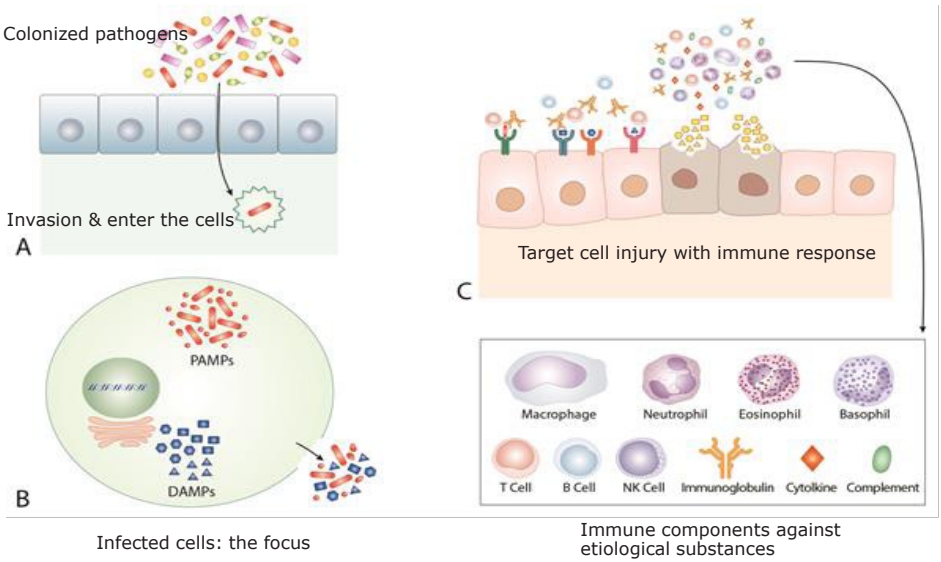
· Severe cases of coronavirus disease, Kawasaki disease (KD), and multisystem inflammatory syndrome in children (MIS-C) share similar findings: a protracted clinical course, multiorgan involvement, and similar activated biomarkers.
· Here we propose etiological agents in KD and MIS-C as species in the microbiota and introduce a common pathogenesis through the protein-homeostasis-system hypothesis.
· Early proper dose of corticosteroids and/or intravenous immunoglobulin may help to reduce morbidity and mortality in these diseases.
- Editorial
- Infection
- Importance of maintaining a high childhood vaccination rate and surveillance program against Japanese encephalitis in Korea
- Su Eun Park
- Clin Exp Pediatr. 2022;65(3):127-128. Published online February 16, 2022
-
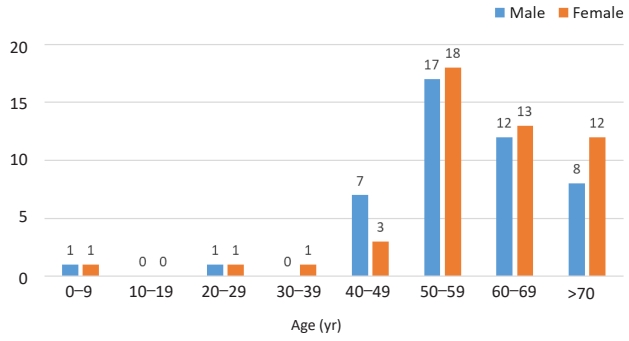
∙ Recent epidemiologic changes of Japanese encephalitis (JE) in Korea are area (rural to urban or suburban) and age shift (children to adult).
∙ Although the main factors contributing to recent epidemiologic changes of JE are not well identified, maintaining high vaccination rates of JE appear to be important in preventing of JE in all age groups.
∙ Continuous surveillance for epidemiology and seroprevalence should be carried out.
- Review Article
- Infection
- Changes in age-specific seroprevalence of Japanese encephalitis virus and impact of Japanese encephalitis vaccine in Korea
- Byung Ok Kwak, Young Jin Hong, Dong Hyun Kim
- Clin Exp Pediatr. 2022;65(3):108-114. Published online September 24, 2021
-
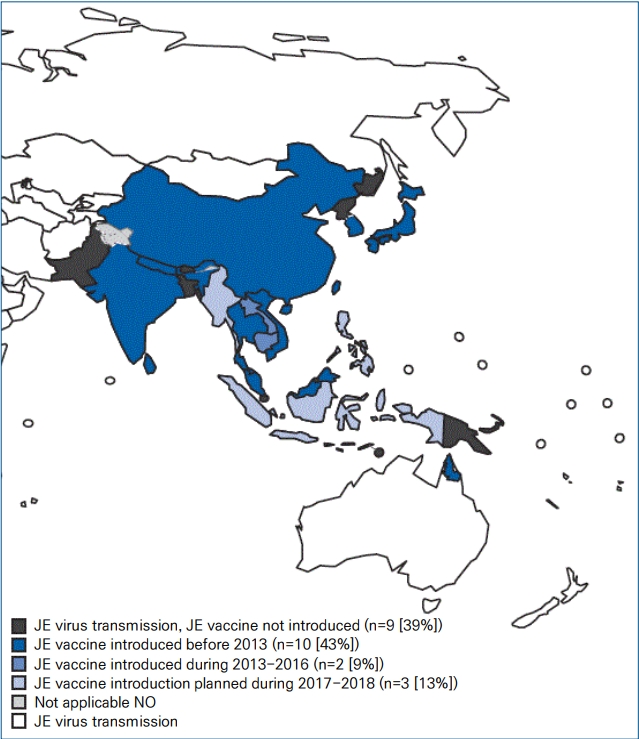
Since the introduction of a universal Japanese encephalitis (JE) vaccination program and urbanization, the incidence of JE has dramatically decreased in Korea. However, recent JE cases have occurred, predominantly among unvaccinated adults and with a shift in age distribution. Continuous surveillance of the seroprevalence of JE is required to establish a proper immunization policy in Korea.
- Original Article
- Infection
- Viral load and rebound in children with coronavirus disease 2019 during the first outbreak in Daegu city
- Mi Ae Chu, Yoon Young Jang, Dong Won Lee, Sung Hoon Kim, Namhee Ryoo, Sunggyun Park, Jae Hee Lee, Hai Lee Chung
- Clin Exp Pediatr. 2021;64(12):652-660. Published online October 12, 2021
-
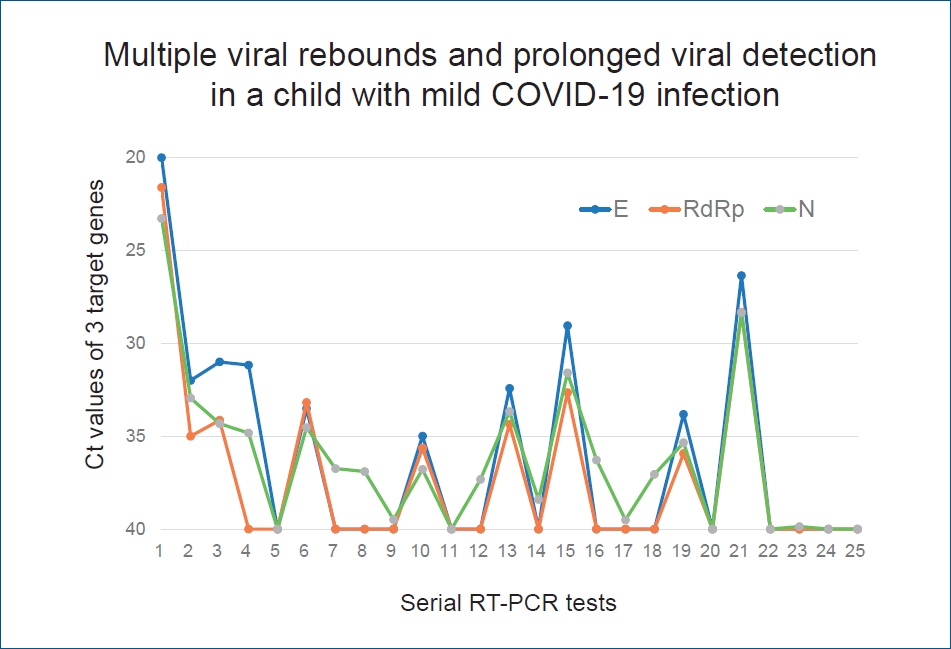
Question: What is the natural course of viral load in children with coronavirus disease 2019 (COVID-19)?
Finding: A significant number of patients still had a relatively high viral load once clinically asymptomatic. Nearly half of the patients experienced viral rebound, which contributed to prolonged viral detection in their respiratory specimens.
Meaning: Further studies are needed to determine the clinical significance of viral rebound in asymptomatic or mild pediatric cases of COVID-19.
- Review Article
- Infection
- Recommendation for use of diphtheria and tetanus toxoids and acellular pertussis, inactivated poliovirus, Haemophilus influenzae type b conjugate, and hepatitis B vaccine in infants
- Hye-Kyung Cho, Su Eun Park, Yae-Jean Kim, Dae Sun Jo, Yun-Kyung Kim, Byung-Wook Eun, Taek-Jin Lee, Jina Lee, Hyunju Lee, Ki Hwan Kim, Eun Young Cho, Jong Gyun Ahn, Eun Hwa Choi; The Committee on Infectious Diseases of the Korean Pediatric Society
- Clin Exp Pediatr. 2021;64(12):602-607. Published online June 8, 2021
-
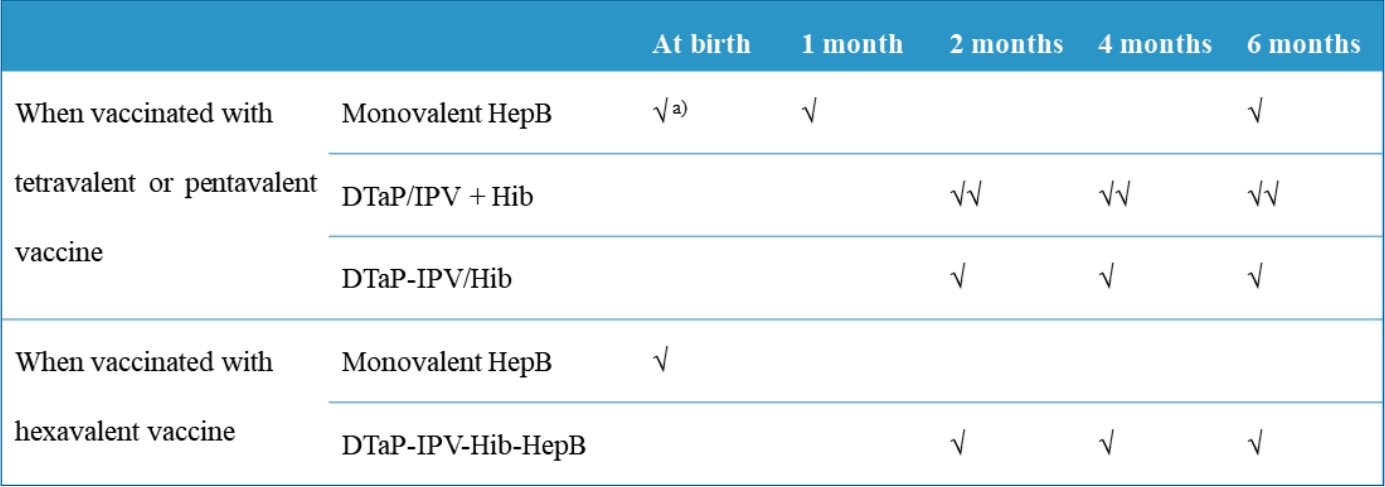
∙ Diphtheria and tetanus toxoids and acellular pertussis-inactivated poliovirus-Haemophilus influenzae type b-hepatitis B (DTaP-IPV-Hib-HepB) was licensed in Korea in April 2020.
∙ DTaP-IPV-Hib-HepB is indicated as a 3-dose primary series for infants aged 2, 4, and 6 months who received the standalone HepB vaccine at birth.
∙ Infants born to HepB surface antigen-positive mothers are currently recommended to be immunized with HepB immunoglobulin at birth and then monovalent HepB vaccine at 0, 1, and 6 months.
- Letter to the Editor
- Infection
- Multisystem inflammatory syndrome in children and Kawasaki disease in infants: 2 sides of the same coin?
- Hing Cheong Kok, Dinesh Nair, Ke Juin Wong, Siew Moy Fong
- Clin Exp Pediatr. 2021;64(11):599-601. Published online October 7, 2021
-
Question: Are multisystem inflammatory syndrome in children (MIS-C) and Kawasaki disease (KD) in infants, 2 sides of the same coin?
Finding: Here we report on a 4-month-old girl with MIS-C and signs of KD with shock. Most (83%) infants with MIS-C had features of KD, especially KD shock syndrome.
Meaning: MIS-C is similar to KD, and likely is a consequence of dysregulated immune responses secondary to sudden acute respiratory syndrome coronavirus 2 infection.
- Clinical Note
- Infection
- A neonate infected with coronavirus disease 2019 with severe symptoms suggestive of multisystem inflammatory syndrome in childhood
- Fatemeh Eghbalian, Ghazal Sami, Saeid Bashirian, Ensiyeh Jenabi
- Clin Exp Pediatr. 2021;64(11):596-598. Published online September 10, 2021
-
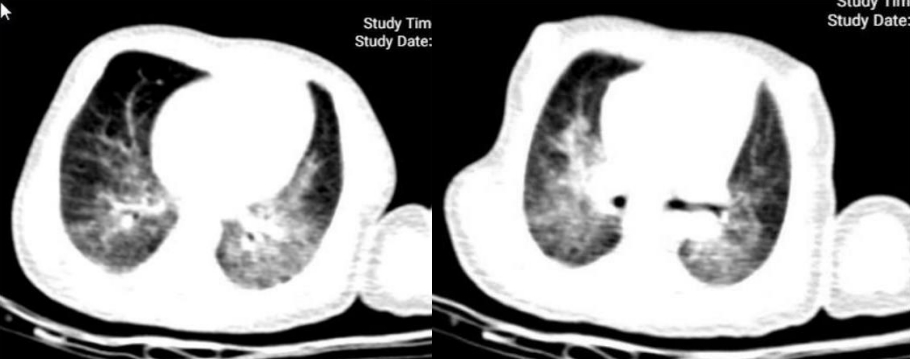
Question: Can multisystem inflammatory syndrome in childhood (MIS-C) occur in the neonate associated with coronavirus disease 2019 (COVID-19)?
Finding: A 9-day-old neonate infected with COVID-19 had fever, respiratory distress, and gastrointestinal symptoms suggestive of MIS-C. This neonate recovered after treatment with intravenous immunoglobulin (IVIG).
Meaning: IVIG successfully treated a rare case of a 9-day-old neonate with COVID-19 and severe symptoms suggestive of MIS-C.
- Original article
- Infection
- The global prevalence of Toxocara spp. in pediatrics: a systematic review and meta-analysis
- Behnam Abedi, Mehran Akbari, Sahar KhodaShenas, Alireza Tabibzadeh, Ali Abedi, Reza Ghasemikhah, Marzieh Soheili, Shnoo Bayazidi, Yousef Moradi
- Clin Exp Pediatr. 2021;64(11):575-581. Published online February 5, 2021
-
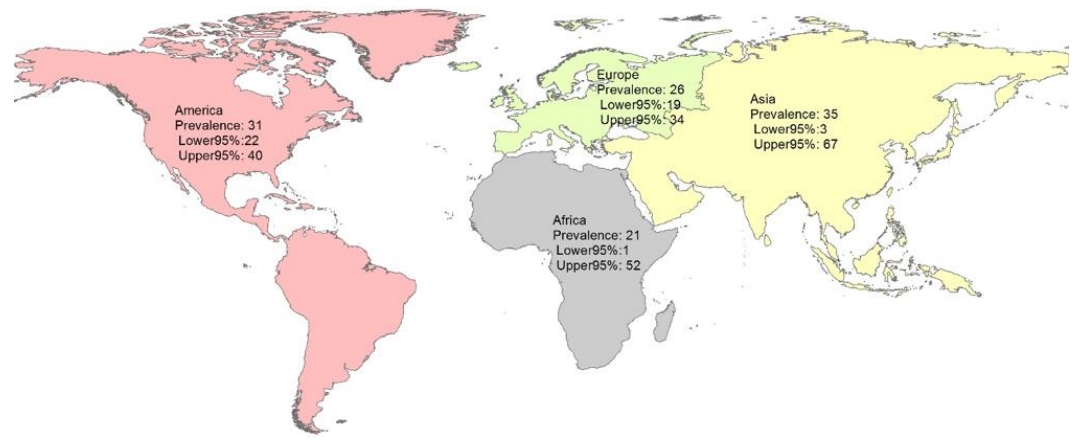
Is the global prevalence of toxocariasis high among children? The prevalence of toxocariasis is high in pediatric patients. Asian children are more susceptible to the disease than other children. Its virulence varies among different socioeconomic classes in various countries. Hand washing after soil contact, routine pet deworming, and appropriate disposal of pet feces in households with Asian pediatrics are needed to prevent toxocariasis.
- Review Article
- Infection
- Effects of nasopharyngeal microbiota in respiratory infections and allergies
- Hyun Mi Kang, Jin Han Kang
- Clin Exp Pediatr. 2021;64(11):543-551. Published online April 15, 2021
-
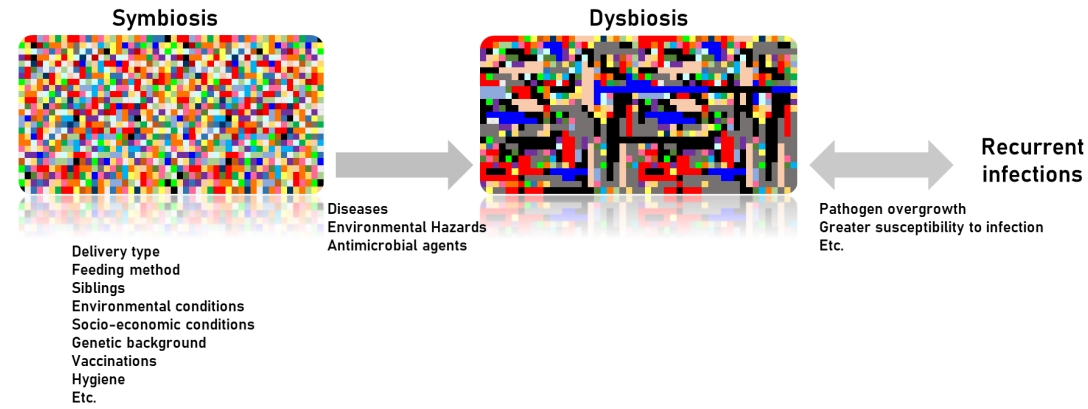
· The nasal microbiota varies with age and is shaped by various factors in healthy individuals.
· The pathological condition of the respiratory tract appears to be associated with reduced nasal microbiota biodiversity, while dysbiosis is involved in the pathophysiology of many respiratory diseases, including otitis, sinusitis, allergic diseases, and lower respiratory infections.
- Consideration in treatment decisions for refractory Mycoplasma pneumoniae pneumonia
- Hye-Kyung Cho
- Clin Exp Pediatr. 2021;64(9):459-467. Published online February 10, 2021
-

• To avoid unnecessary exposure to secondary antibiotics, it is needed to diagnose Mycoplasma pneumoniae (MP) pneumonia carefully, especially when unresponsiveness to macrolide is suspected.
• Serologic and molecular tests for MP infection and excluding respiratory infection caused by other pathogens might be considered.
• It is necessary to continuously monitor antibiotic susceptibility of MP, and efforts to lower antibiotic pressure are required.
-

-
-

-

-
Impact Factor4.2
-
6.52022CiteScore92nd percentilePowered by







